

June 15 – 21: “Can writers play fast and loose on politics, foreign relations, technology, careers and personality traits?”
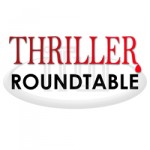 Readers of thrillers appreciate realism. This week ITW Members discuss how much can writers play fast and loose on politics, foreign relations, technology, careers or personality traits? Join Tim Lees, Alex Dolan, John Farrow, Eric Red, Adam Mitzner, Lisa Von Biela, John Palisano, Adrian Magson, Paul Dale Anderson, Jerry Amernic, Andy Boot, Jean Heller and Melanie Surani!
Readers of thrillers appreciate realism. This week ITW Members discuss how much can writers play fast and loose on politics, foreign relations, technology, careers or personality traits? Join Tim Lees, Alex Dolan, John Farrow, Eric Red, Adam Mitzner, Lisa Von Biela, John Palisano, Adrian Magson, Paul Dale Anderson, Jerry Amernic, Andy Boot, Jean Heller and Melanie Surani!
~~~~~
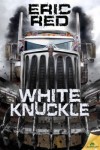 Eric Red is a Los Angeles based novelist, screenwriter and film director. His first novel, Don’t Stand So Close, is available in hardcover and trade paperback from SST Publications. His second and third novels, the werewolf western The Guns Of Santa Sangre and the sci-fi monster novel It Waits Below, are available from Samhain Publishing. Recent published short stories have been in Weird Tales Magazine, Cemetery Dance Magazine, Shroud Magazine, and the Dark Delicacies III: Haunted anthology. He created and wrote the comic series and graphic novel Containment for IDW Publishing and the comic series Wild Work for Antarctic Press. His films include The Hitcher, Near Dark, Cohen and Tate, Body Parts, Bad Moon and 100 Feet.
Eric Red is a Los Angeles based novelist, screenwriter and film director. His first novel, Don’t Stand So Close, is available in hardcover and trade paperback from SST Publications. His second and third novels, the werewolf western The Guns Of Santa Sangre and the sci-fi monster novel It Waits Below, are available from Samhain Publishing. Recent published short stories have been in Weird Tales Magazine, Cemetery Dance Magazine, Shroud Magazine, and the Dark Delicacies III: Haunted anthology. He created and wrote the comic series and graphic novel Containment for IDW Publishing and the comic series Wild Work for Antarctic Press. His films include The Hitcher, Near Dark, Cohen and Tate, Body Parts, Bad Moon and 100 Feet.
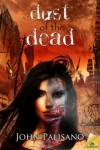 John Palisano‘s non-fiction has appeared in FANGORIA and DARK DISCOVERIES magazines. His first novel from Samhain Publishing, DUST OF THE DEAD, will be released in June 2015. John Palisano’s short stories have appeared in anthologies from PS Publishing, Terror Tales, Lovecraft eZine, Horror Library, Bizarro Pulp, Written Backwards, Dark Continents, Darkscribe, DarkFuse, Dark House, and more. His stories have twice been Bram Stoker Award Nominees.
John Palisano‘s non-fiction has appeared in FANGORIA and DARK DISCOVERIES magazines. His first novel from Samhain Publishing, DUST OF THE DEAD, will be released in June 2015. John Palisano’s short stories have appeared in anthologies from PS Publishing, Terror Tales, Lovecraft eZine, Horror Library, Bizarro Pulp, Written Backwards, Dark Continents, Darkscribe, DarkFuse, Dark House, and more. His stories have twice been Bram Stoker Award Nominees.
 John Farrow is the “crime” pseudonym for Canadian novelist Trevor Ferguson. His series with Sergeant-Detective Émile Cinq-Mars was called the best of our time by Booklist, and the best of all time by Die Zeit in Germany. The first novels were published in seventeen countries. The Storm Murders is the first of a new trilogy of Cinq-Mars thrillers, published by Minotaur, and has received starred reviews in Kirkus, PW and Library Journal.
John Farrow is the “crime” pseudonym for Canadian novelist Trevor Ferguson. His series with Sergeant-Detective Émile Cinq-Mars was called the best of our time by Booklist, and the best of all time by Die Zeit in Germany. The first novels were published in seventeen countries. The Storm Murders is the first of a new trilogy of Cinq-Mars thrillers, published by Minotaur, and has received starred reviews in Kirkus, PW and Library Journal.
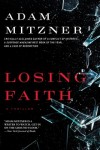 In addition to being the author of three critically acclaimed legal thrillers (including a Suspense Magazine book of the year), Adam Mitzner is also the head of the litigation department of Pavia & Harcourt LLP, a Manhattan law firm. He lives in New York City with his wife and children. Adam graduated from Brandeis University with a B.A. and M.A. in politics, and from the University of Virginia School of Law. Most importantly, he is an avid Pez collector and a lover of all things Batman.
In addition to being the author of three critically acclaimed legal thrillers (including a Suspense Magazine book of the year), Adam Mitzner is also the head of the litigation department of Pavia & Harcourt LLP, a Manhattan law firm. He lives in New York City with his wife and children. Adam graduated from Brandeis University with a B.A. and M.A. in politics, and from the University of Virginia School of Law. Most importantly, he is an avid Pez collector and a lover of all things Batman.
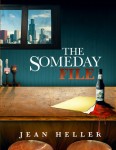 Most of Jean Heller’s career was as an investigative and projects reporter and editor in New York City, Washington, D.C. and St. Petersburg Florida. Her career as a novelist began in the 1990s with the publication of the thrillers, “Maximum Impact” and “Handyman” by St. Martin’s Press. Then life intervened and postponed her new book, “The Someday File,” to publication in late 2014. Jean has won the Worth Bingham Prize, the Polk Award, and is an eight-time Pulitzer Prize nominee.
Most of Jean Heller’s career was as an investigative and projects reporter and editor in New York City, Washington, D.C. and St. Petersburg Florida. Her career as a novelist began in the 1990s with the publication of the thrillers, “Maximum Impact” and “Handyman” by St. Martin’s Press. Then life intervened and postponed her new book, “The Someday File,” to publication in late 2014. Jean has won the Worth Bingham Prize, the Polk Award, and is an eight-time Pulitzer Prize nominee.
 Alex Dolan is a writer and musician based in California. His first book, The Euthanist, is published through Diversion Books and represented by the Sandra Dijkstra Literary Agency. He has recorded four albums: Americana, Move, Owe Me One Cannoli, and Cherub Conga Line (with Crash 22). In addition, he specializes in pro-social communications, using marketing techniques to drive progress on social issues and with mission-driven organizations. He has a master’s degree in strategic communications from Columbia University.
Alex Dolan is a writer and musician based in California. His first book, The Euthanist, is published through Diversion Books and represented by the Sandra Dijkstra Literary Agency. He has recorded four albums: Americana, Move, Owe Me One Cannoli, and Cherub Conga Line (with Crash 22). In addition, he specializes in pro-social communications, using marketing techniques to drive progress on social issues and with mission-driven organizations. He has a master’s degree in strategic communications from Columbia University.
 Andy Boot has spent most of his career in the shadows as one of the writers behind the series ‘Deathlands’ and ‘The Executioner’, having written 28 novels in these franchises. He also created the ‘Dreams Of Inan’ series for Abaddon, as well as co-creating three other series, writing one novel, and being series consultant. He has written four non-fiction books under his own name, including a seminal work on British Horror films (‘Fragments Of Fear’). He has worked in TV and new media, and just likes writing. He lives just outside London.
Andy Boot has spent most of his career in the shadows as one of the writers behind the series ‘Deathlands’ and ‘The Executioner’, having written 28 novels in these franchises. He also created the ‘Dreams Of Inan’ series for Abaddon, as well as co-creating three other series, writing one novel, and being series consultant. He has written four non-fiction books under his own name, including a seminal work on British Horror films (‘Fragments Of Fear’). He has worked in TV and new media, and just likes writing. He lives just outside London.
 Adrian Magson is the author of 17 books and hundreds of short stories and articles. His various series include the Gavin & Palmer crime novels (5), the Harry Tate spy thrillers (5), the Inspector Lucas Rocco crime novels set in France in the 1960s (4), a YA ghost novel, The Lost Patrol, and The Watchman – the first in the highly successful Marc Portman spy thriller series. The sequel, Close Quarters, is out in April. He is currently working on a new series, the first of which, The Locker, is due out in 2016. A regular reviewer for Shots Magazine, he writes the ‘Beginners’ and ‘New Author’ pages for Writing Magazine, and is the author of Write On! – The Writer’s Help Book (Accent Press).
Adrian Magson is the author of 17 books and hundreds of short stories and articles. His various series include the Gavin & Palmer crime novels (5), the Harry Tate spy thrillers (5), the Inspector Lucas Rocco crime novels set in France in the 1960s (4), a YA ghost novel, The Lost Patrol, and The Watchman – the first in the highly successful Marc Portman spy thriller series. The sequel, Close Quarters, is out in April. He is currently working on a new series, the first of which, The Locker, is due out in 2016. A regular reviewer for Shots Magazine, he writes the ‘Beginners’ and ‘New Author’ pages for Writing Magazine, and is the author of Write On! – The Writer’s Help Book (Accent Press).
 Tim Lees is a British author living in Chicago, which is where much of his present book is set. Devil in the Wires will be available as an e-book in May and as a mass market paperback about a month later.
Tim Lees is a British author living in Chicago, which is where much of his present book is set. Devil in the Wires will be available as an e-book in May and as a mass market paperback about a month later.
 Lisa von Biela worked in Information Technology for 25 years, then dropped out to attend the University of Minnesota Law School, graduating magna cum laude in 2009. She now practices law in Seattle, Washington. Lisa began writing short, dark fiction just after the turn of the century. Her first publication appeared in The Edge in 2002. She went on to publish a number of short works in various small press venues, including Gothic.net, Twilight Times, Dark Animus, AfterburnSF, and more. She is the author of the novels THE GENESIS CODE, THE JANUS LEGACY, and BLOCKBUSTER, as well as the novella ASH AND BONE.
Lisa von Biela worked in Information Technology for 25 years, then dropped out to attend the University of Minnesota Law School, graduating magna cum laude in 2009. She now practices law in Seattle, Washington. Lisa began writing short, dark fiction just after the turn of the century. Her first publication appeared in The Edge in 2002. She went on to publish a number of short works in various small press venues, including Gothic.net, Twilight Times, Dark Animus, AfterburnSF, and more. She is the author of the novels THE GENESIS CODE, THE JANUS LEGACY, and BLOCKBUSTER, as well as the novella ASH AND BONE.
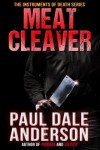 Paul Dale Anderson has written more than 17 novels and hundreds of short stories, mostly in the thriller, mystery, horror, fantasy, and science fiction genres. Paul has also written contemporary romances and westerns. Paul is an Active Member of SFWA and HWA, and he was elected Vice President and Trustee of Horror Writers Association in 1987. He is a current member of International Thriller Writers, Author’s Guild, and a former Active Member of MWA.
Paul Dale Anderson has written more than 17 novels and hundreds of short stories, mostly in the thriller, mystery, horror, fantasy, and science fiction genres. Paul has also written contemporary romances and westerns. Paul is an Active Member of SFWA and HWA, and he was elected Vice President and Trustee of Horror Writers Association in 1987. He is a current member of International Thriller Writers, Author’s Guild, and a former Active Member of MWA.
 Jerry Amernic is a Toronto journalist who writes historical thrillers. His riveting novel The Last Witness is about the last living survivor of the Holocaust in the year 2039, a time when people are abysmally ignorant of the past century. His newest book QUMRAN is a biblical-historical thriller about an archeologist who makes a dramatic discovery in the Holy Land. It explores the Dead Sea Scrolls, Holy Grail, Holy Shroud and all the Arab-Israeli wars.
Jerry Amernic is a Toronto journalist who writes historical thrillers. His riveting novel The Last Witness is about the last living survivor of the Holocaust in the year 2039, a time when people are abysmally ignorant of the past century. His newest book QUMRAN is a biblical-historical thriller about an archeologist who makes a dramatic discovery in the Holy Land. It explores the Dead Sea Scrolls, Holy Grail, Holy Shroud and all the Arab-Israeli wars.
 Melanie Surani is a blogger, hair stylist, and author with a heart for international travel. When she isn’t cutting hair, Melanie is thinking about ways to kill people (for mystery novels). She lives with her husband and cat in New York City, where she is hard at work on her next book with Booktrope Publishing. You can follow Melanie’s adventures on Facebook at MelSurani, on Twitter @melsurani, and Tumblr at MelSurani.
Melanie Surani is a blogger, hair stylist, and author with a heart for international travel. When she isn’t cutting hair, Melanie is thinking about ways to kill people (for mystery novels). She lives with her husband and cat in New York City, where she is hard at work on her next book with Booktrope Publishing. You can follow Melanie’s adventures on Facebook at MelSurani, on Twitter @melsurani, and Tumblr at MelSurani.
- LAST GIRL MISSING with K.L. Murphy - July 25, 2024
- CHILD OF DUST with Yigal Zur - July 25, 2024
- THE RAVENWOOD CONSPIRACY with Michael Siverling - July 19, 2024
